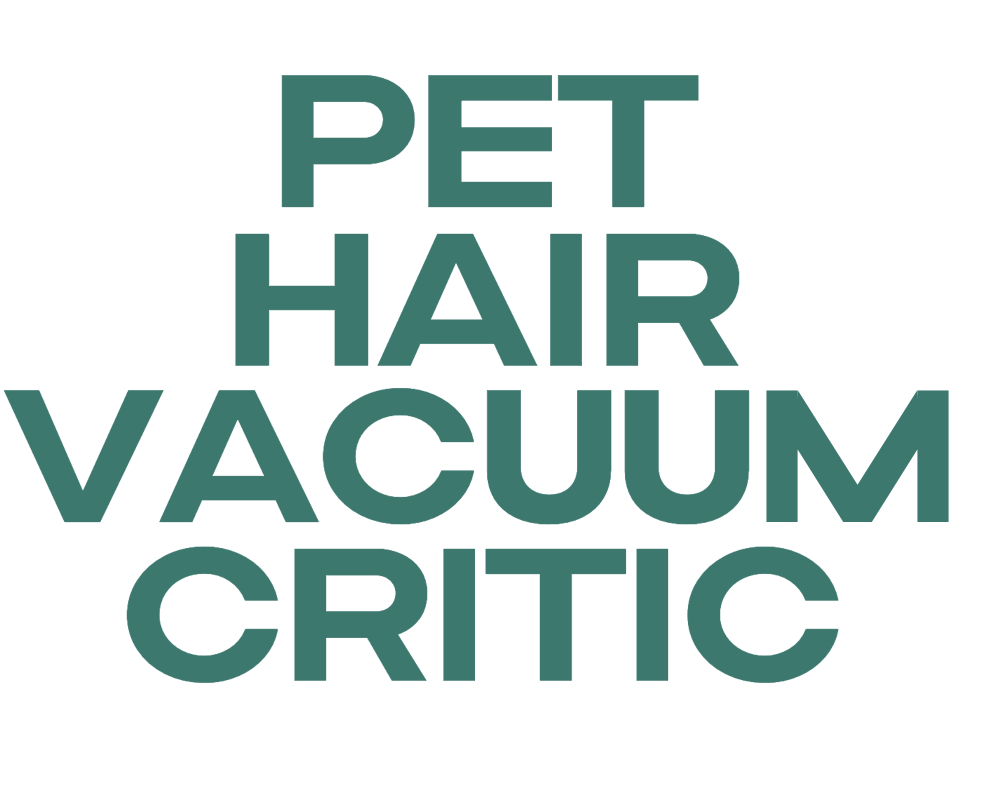Guides & FAQs
10 Reasons Why It Cost More to Get Your Pet Groomed Than You Own Hair Cut

Have you ever pondered as a pet owner why getting your furry companion groomed seems to be pricier than having your own hair trimmed?
Well, here’s a staggering statistic for you: the average pet grooming session can cost up to 50% more than a regular human haircut.
But why?
In this article, I’ll delve into 10 reasons why pet grooming is pricier, from the specialized tools and products used to the expertise and extra care needed for different breeds and coat types.
Key Takeaways
- Pet grooming requires specialized expertise, time, and tools, which contribute to the higher cost compared to a regular hair cut.
- Grooming professionals use pet-specific products and follow strict safety precautions to ensure the well-being and comfort of pets.
- Proper handling and restraining techniques are crucial for the safety and stress-free experience of pets during grooming.
- Groomers address specific grooming needs and challenges based on breed, coat type, and individual requirements, ensuring personalized care for each dog.
Time and Expertise Required
I can’t just quickly trim my own hair, but I also don’t have the time or expertise required to groom my pet.
Time management is a crucial aspect when it comes to grooming. The grooming industry trends have evolved over the years, and professionals invest a significant amount of time in learning the latest techniques and staying updated with the industry standards.
Grooming a pet involves various tasks, such as bathing, trimming, brushing, and nail clipping, which require patience and skill. Additionally, pets may have specific grooming needs based on their breed and coat type, which further adds to the complexity.
Grooming professionals have the knowledge and experience to handle these tasks efficiently, ensuring the safety and well-being of our beloved pets. Thus, the cost of pet grooming reflects the time and expertise required to provide a high-quality service.
Specialized Tools and Equipment
Using specialized tools and equipment for pet grooming can be more expensive compared to regular haircuts.
As a professional pet groomer, I understand the importance of using the right tools to achieve the best results. Grooming pets requires a range of specialized techniques, such as hand-stripping, scissoring, and de-shedding.
These techniques require specific tools like stripping knives, thinning shears, and high-quality brushes, which can be costly. Additionally, the grooming industry trends are constantly evolving, with new tools and equipment being introduced regularly to improve the grooming process.
Staying up to date with these trends and investing in the latest tools can further increase the cost of pet grooming. Although it may seem pricey, using specialized tools and techniques ensures that your pet receives the best care and grooming experience possible.
Pet-Specific Grooming Products
Investing in pet-specific grooming products ensures that my furry clients receive the highest quality care and maintain a healthy coat. Proper pet hygiene is essential for their overall well-being, and using the right products is key to achieving that.
Pet-specific grooming products are specifically formulated to meet the unique needs of our four-legged friends. These products are designed to address common issues such as dry skin, shedding, and odor. They contain ingredients that are safe and gentle for pets, ensuring that their skin and coat aren’t irritated.
While the initial cost of pet-specific grooming products may be higher compared to regular human products, they offer long-term benefits. By using these products, I can provide the best care for my clients, reducing the risk of skin problems and costly veterinary visits.
Ultimately, investing in pet-specific grooming products is a worthwhile expense that contributes to the overall health and happiness of our furry companions.
Additional Safety Precautions
To ensure the safety of my furry clients, I always take additional precautions during the grooming process. As a professional groomer, I understand the importance of maintaining high grooming standards and ensuring the well-being of the pets in my care. Here are some additional safety measures I take:
-
I undergo additional training: I continuously update my skills and knowledge through workshops and courses focused on pet safety and handling techniques.
-
I use top-quality grooming equipment: This includes sharp and well-maintained grooming tools to minimize any discomfort or potential injury to the pets.
-
I follow strict hygiene protocols: I maintain a clean and sanitized grooming area to prevent the spread of germs or infections.
By implementing these additional safety measures, I can provide a safe and comfortable grooming experience for my furry clients.
Transitioning into the next section, let’s discuss the importance of proper handling and restraining techniques in ensuring the safety of both the pet and the groomer.
Handling and Restraining Techniques
As a professional pet groomer, I understand the importance of proper handling and restraining techniques when it comes to ensuring the safety and well-being of the animals in my care.
By utilizing safe pet handling methods and effective restraint techniques, I’m able to efficiently and safely groom pets of all sizes and temperaments.
These techniques not only ensure the safety of the pet, but also help to create a calm and stress-free grooming experience for both the pet and the groomer.
Safe Pet Handling
Handling pets safely is essential when it comes to grooming them, as it ensures their well-being and prevents any potential accidents. To truly understand the importance of pet grooming safety and proper handling techniques, consider the following:
-
Pets are like family members, and their safety should be a top priority. Proper handling techniques ensure that our furry friends feel secure and loved during the grooming process.
-
Accidents can happen in an instant if pets aren’t handled correctly. By practicing safe handling techniques, we can minimize the risk of injury to both ourselves and our pets, creating a stress-free grooming experience.
Transitioning into the subsequent section about effective restraint techniques, it’s crucial to discuss the various methods that can be employed to keep pets still and calm during grooming sessions.
Effective Restraint Techniques
I find that using gentle and secure restraint techniques during pet grooming helps to create a calm and controlled environment. Effective grooming requires not only skill and expertise but also the ability to handle and control pets safely.
By using calming techniques, such as gentle pressure and positive reinforcement, I’m able to keep pets relaxed and cooperative during the grooming process. This not only ensures their safety but also allows for a more efficient and thorough grooming experience.
It’s important to understand that each pet is unique, and what works for one may not work for another. Therefore, it’s essential to tailor the restraint techniques to suit the individual needs and temperament of each pet.
Dealing With Unpredictable Animals
Sometimes, pets can be quite unpredictable during grooming sessions, making it a bit more challenging to ensure a smooth and efficient process. Understanding animal behavior is crucial when dealing with such situations. Here are some reasons why pets can be unpredictable during the grooming process:
-
Fear and anxiety:
-
Loud noises or unfamiliar surroundings can stress pets out, causing them to act unpredictably.
-
Previous negative experiences during grooming can make pets fearful and resistant.
-
Protective instincts:
-
Some pets may become defensive and protective when they sense a potential threat to their personal space.
-
They may exhibit aggressive behavior to protect themselves or their owners.
Dealing with unpredictable animals requires patience, gentle handling, and the expertise of a trained groomer. It’s essential to create a calm and soothing environment, use positive reinforcement techniques, and adapt the grooming process to each pet’s individual needs. By understanding animal behavior and employing appropriate techniques, groomers can ensure a safe and successful grooming experience for both the pet and the groomer.
Extra Care for Different Breeds and Coat Types
Adapting grooming techniques based on the breed and coat type of the pet is essential for providing extra care and achieving the best results. Different breeds and coat types require specific grooming approaches to maintain their health and appearance. For instance, long-haired breeds like the Shih Tzu or Poodle need regular brushing to prevent matting and tangling. This extra care not only ensures the pet’s comfort but also helps to avoid more extensive grooming sessions that can lead to additional costs.
Additionally, understanding the specific needs of each breed and coat type allows groomers to use the appropriate tools and products, such as specialized shampoos or clippers, which may incur extra grooming costs.
Addressing Specific Grooming Needs and Challenges
Addressing specific grooming needs and challenges is an essential part of providing quality care for pets.
As a professional groomer, I’m well-versed in breed-specific grooming techniques, enabling me to tailor my approach to each individual dog.
Additionally, I’m experienced in handling difficult behaviors, ensuring a safe and stress-free grooming experience for both the pet and the owner.
Breed-Specific Grooming Techniques
I’ve noticed that certain dog breeds require specialized grooming techniques, which can contribute to the higher cost of getting your pet groomed compared to getting your own hair cut.
When it comes to grooming dogs, there are breed-specific challenges that groomers have to address. For example, breeds with long, flowing coats like the Shih Tzu or the Afghan Hound require regular brushing and detangling to prevent matting. On the other hand, breeds with short, dense coats like the Labrador Retriever or the Boxer may need regular shedding management to keep their coat healthy and reduce shedding at home.
Considering the different coat types of various breeds is essential to ensure proper grooming and maintain the overall health and appearance of the dog. So, it’s no wonder that grooming costs for pets can be higher than our own haircuts.
Handling Difficult Behaviors
Dealing with difficult behaviors in dogs can be challenging, but there are effective training techniques that can help to address these issues. Difficult behavior management is essential for both the well-being of the dog and the satisfaction of the customer.
When faced with a dog displaying challenging behaviors, it’s crucial to remain calm and composed. One technique that can be effective is positive reinforcement, which involves rewarding desired behaviors with treats or praise. This helps to reinforce good behavior and discourage unwanted actions.
Another useful technique is desensitization, where the dog is gradually exposed to the triggering stimuli in a controlled and positive manner. This helps the dog learn to remain calm and relaxed in situations that would normally cause anxiety or aggression.
Catering to Individual Needs
Catering to individual needs is important in providing personalized care and ensuring the well-being of each dog. At our grooming salon, we understand that every dog is unique and requires customized services to meet their specific needs. We believe in giving each dog personalized attention to make them feel comfortable and loved during their grooming experience.
Here are a few ways we cater to individual needs:
-
Tailored grooming techniques: We use different grooming techniques based on the breed, coat type, and temperament of each dog. This ensures that their grooming experience is gentle, stress-free, and suited to their specific requirements.
-
Special treatments: Some dogs may have sensitive skin or allergies. We provide specialized treatments and use hypoallergenic products to ensure their skin remains healthy and irritation-free.
Cleaning and Sanitizing the Grooming Area
Maintaining a clean and sanitized grooming area requires regular disinfection and thorough cleaning. As a professional pet groomer, I understand the importance of cleanliness and hygiene in ensuring the safety and well-being of both the pets and the groomers. To achieve this, I utilize a variety of cleaning supplies specifically designed for grooming facility maintenance. These supplies include disinfectants, detergents, and specialized pet-safe cleaners. By following a strict cleaning routine, I can ensure that the grooming area is free from dirt, hair, and any potential germs or bacteria.
To give you a better idea of the cleaning process, here is a table that outlines the steps involved:
| Cleaning Step | Description |
|---|---|
| 1. Clearing the Area | Remove any loose hair, debris, or items that may hinder cleaning. |
| 2. Disinfection of Surfaces and Tools | Use pet-safe disinfectants to sanitize all surfaces and equipment. |
| 3. Mopping and Vacuuming | Thoroughly clean the floors to remove any remaining dirt or hair. |
Professional Certification and Ongoing Training
Attending ongoing training and obtaining professional certification are essential aspects of my career as a pet groomer. It’s crucial for me to stay updated with the latest techniques and industry standards to provide the best care for the pets I groom. Professional development not only ensures that I have the necessary skills and knowledge, but it also demonstrates my commitment to delivering high-quality service.
Here are some reasons why professional certification and ongoing training are important:
-
Increased expertise: Ongoing training allows me to learn new grooming techniques, such as breed-specific cuts or handling difficult pets, which ultimately improves the quality of my work.
-
Enhanced safety: By staying up-to-date with safety protocols and best practices, I can ensure the well-being of the pets in my care, reducing the risk of accidents and injuries.
Frequently Asked Questions
Are There Any Risks or Potential Injuries Involved in Pet Grooming?
There are risks involved in pet grooming, including potential injuries. It is important to be aware of these risks and take necessary precautions to ensure the safety of your pet during the grooming process.
How Often Should I Groom My Pet at Home Between Professional Grooming Sessions?
Grooming your pet at home between professional sessions can save money. Regular brushing, bathing, and trimming can help keep their coat healthy and clean. Learn how to groom different types of pets and follow these tips for success.
Can I Use Regular Human Hair Products on My Pet?
Yes, you can use regular human hair products on your pet, but it is not recommended. Pets have different pH levels and sensitivities, so it’s best to use specifically formulated pet shampoos for their grooming needs.
Are There Any Specific Grooming Techniques or Products Recommended for Pets With Sensitive Skin?
When it comes to grooming techniques for pets with sensitive skin, it’s important to use pet-friendly products that are specifically designed for their needs. These products can help minimize irritation and keep their skin healthy.
What Are the Benefits of Professional Certification for Pet Groomers?
As a certified pet groomer, I know the importance of professional certification. It ensures that groomers have the necessary skills and knowledge to properly care for and groom pets, providing numerous benefits for both the pets and their owners.
Conclusion
In conclusion, getting your pet groomed can be more expensive than your own haircut due to the time, expertise, and specialized tools required.
Groomers also use pet-specific products and take extra safety precautions to ensure your furry friend’s well-being. They cater to different breeds and coat types, addressing specific grooming needs and challenges.
The grooming area is cleaned and sanitized to maintain a hygienic environment. Groomers undergo professional certification and ongoing training, ensuring that your pet receives the best care possible.
Carter is a valued member of our team at Pet Hair Vacuum Critic, where his passion for pets and exceptional writing skills come together to create informative and engaging content for our readers.
Carter’s journey into the world of pet care and pet hair management began with his own furry companions. As a pet owner, he understands the daily challenges of keeping a clean and tidy home while providing a loving environment for his pets. This personal experience drives his dedication to helping fellow pet owners navigate the world of pet hair removal and management.
Guides & FAQs
Why Would Creamatory Send Some of a Pets Hair to the Pet Woner
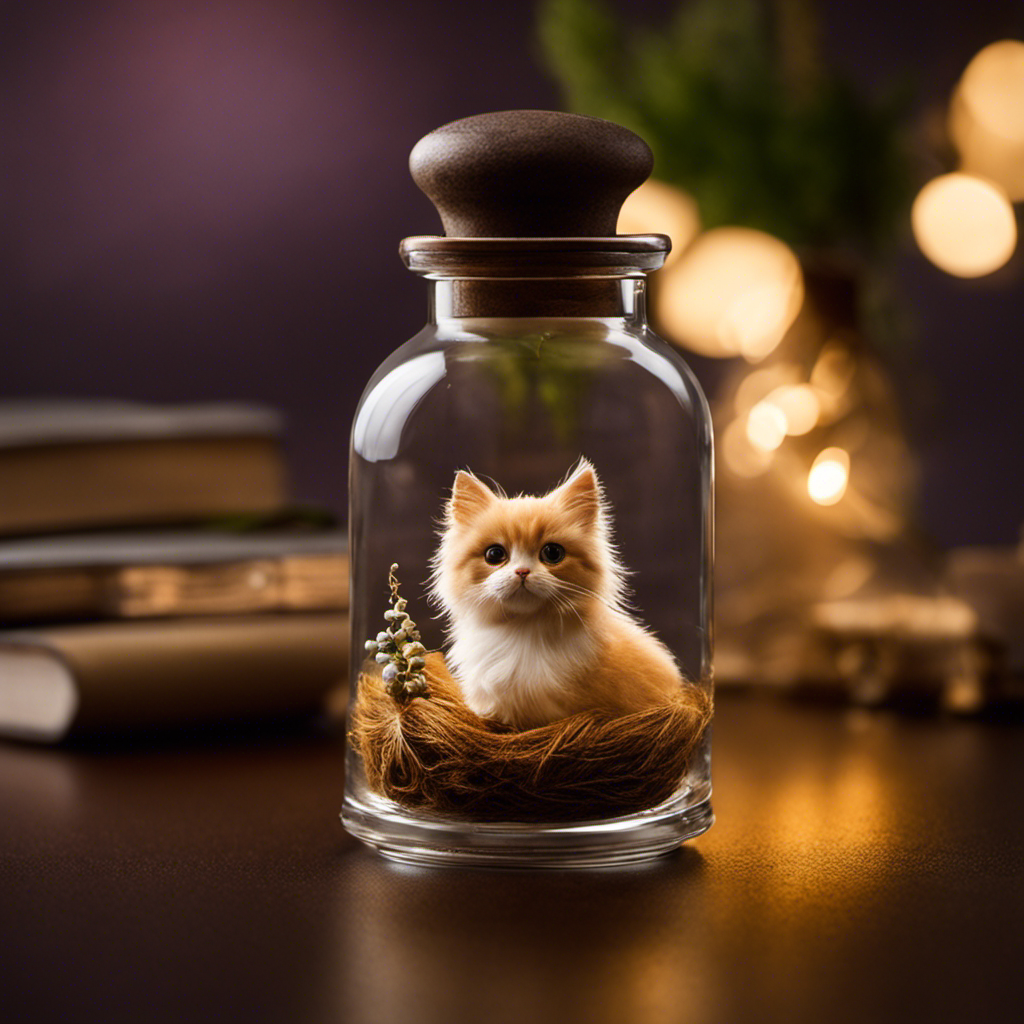
As a pet owner, have you ever pondered the reason behind a crematorium sending you a tuft of your cherished pet’s fur? While it might appear strange at first, this act holds a deep meaning.
In this article, we will explore the emotional connection between pet owners and their furry friends, the symbolism of receiving a lock of their hair, and the healing power it can provide.
Join me as we delve into the fascinating world of honoring our pets and finding comfort in their memory.
Key Takeaways
- Receiving a lock of their pet’s hair allows owners to feel their presence even after they’re gone.
- The hair serves as a tangible reminder of the bond shared and brings back cherished memories.
- Receiving the pet’s hair helps pet owners feel a continued connection to their furry friend.
- The hair holds deeper meaning and significance beyond being a physical memento.
The Significance of Receiving Part of Your Pet’s Hair From a Crematory
I really appreciate receiving part of my pet’s hair from the crematory because it serves as a meaningful keepsake of their presence in my life. Understanding grief and the deep emotional connection we’ve with our pets is essential in comprehending the significance of this gesture.
Losing a beloved pet can be a devastating experience, and finding ways to memorialize them can bring comfort and solace during the grieving process. Having a tangible reminder, like a lock of their hair, allows me to feel their presence even after they’re gone. It serves as a physical connection to the bond we shared and brings back cherished memories. This small token helps me honor their memory and provides a sense of closure.
Transitioning to the next section, let’s explore why pet owners are sent some of their pet’s hair and the emotional connection behind it.
Understanding the Emotional Connection: Why Pet Owners Are Sent Some of Their Pet’s Hair
Receiving a small amount of their beloved companion’s hair can help pet owners feel a continued connection to their furry friend. Understanding grief and the role of rituals in the healing process is crucial when it comes to comprehending why pet owners are sent some of their pet’s hair.
A lock of hair, carefully packaged, arrives in the mail, an intimate memento that holds memories and love. The touch of their fur against our skin, like a gentle caress, brings comfort and solace. As we hold that strand of hair in our hands, we can almost feel their presence, their warmth, their unconditional love.
The act of receiving their pet’s hair becomes a ritual, a way to honor their memory and continue to celebrate their life. It provides a tangible connection to a beloved companion who’s passed on. It helps to ease the pain of loss and allows for a sense of closure.
In these small strands of hair, we find solace, understanding, and a way to keep our furry friends close, even after they’re gone.
Exploring the Symbolism: What Does Receiving a Lock of Your Pet’s Hair Mean
Opening the package to find a lock of my furry friend’s hair felt like receiving a cherished symbol of their presence and love. It was more than just a physical memento; it held deeper meaning and significance.
Exploring the spiritual aspect of this gesture, it became apparent that the hair represented a spiritual connection between me and my beloved pet. In many cultures, hair is regarded as a powerful symbol of life force and vitality. By sending me this keepsake, the crematory acknowledged the profound bond I shared with my pet.
Furthermore, the therapeutic benefits of receiving a lock of my pet’s hair can’t be overstated. It provided comfort during the grieving process, offering a tangible reminder of their presence. This simple act of sending their hair helped bring closure and served as a source of solace during this difficult time.
The Healing Power of Keepsakes: How Pet Hair Can Provide Comfort and Closure
Finding comfort and closure in the midst of grief, the lock of my furry friend’s hair served as a tangible reminder of their presence and the love we shared. It may seem strange to some, but for those who’ve experienced the loss of a beloved pet, these keepsakes hold a healing power that’s difficult to put into words.
• The softness of the hair, much like the touch of their fur against my skin, brings a sense of warmth and familiarity, providing solace in moments of sadness.
• As I run my fingers through the strands, memories come flooding back – the way they’d curl up next to me on the couch, the sound of their purring as they nuzzled against my cheek.
-
These physical reminders offer a sense of closure, allowing me to hold onto the bond we shared even after their physical presence is gone.
-
The lock of hair becomes a connection, a way to keep them close and find solace in their memory.
Honoring Your Pet’s Memory: Why Crematories Include a Portion of Hair in Their Services
When I brought my beloved pet to the crematory, I was surprised to learn that they include a portion of hair in their services as a way to honor and remember our furry friends. This small but significant gesture highlights the importance of pet memorials and the role that crematories play in the grieving process.
Pet memorials serve as a tangible reminder of the love and companionship our pets brought into our lives. They provide comfort and closure during the difficult grieving process. Including a portion of hair in the cremation process allows us to hold onto a physical memento of our cherished pet, providing a source of solace and a tangible connection to their memory.
This thoughtful gesture from the crematory acknowledges the deep bond we share with our pets and helps us navigate the emotional journey of saying goodbye.
Frequently Asked Questions
How Is the Pet’s Hair Collected and Preserved by the Crematory?
When a pet passes away, crematories collect and preserve their hair as a way to honor their memory. Techniques like gentle brushing or shaving are used to collect the hair, which is then carefully preserved and sent to the pet owner as a keepsake.
Are There Any Specific Guidelines or Instructions for Handling and Storing the Received Lock of Hair?
When it comes to handling and storing the lock of hair sent by the crematory, there are specific guidelines and instructions to follow. It’s important to handle it with care and store it in a safe place to cherish the memories of our beloved pet.
Can the Pet Owner Choose to Receive a Different Keepsake Item Instead of Their Pet’s Hair?
As a pet owner, you have the option to choose alternative keepsake options instead of receiving your pet’s hair. We understand the sentimental value and offer a range of options to honor your beloved pet’s memory.
Do All Crematories Include a Portion of Hair in Their Services, or Is It an Optional Offering?
Sending a portion of a pet’s hair to the pet owner is an optional offering by crematories. It acknowledges the emotional connection owners have to their pet’s hair and provides a physical keepsake for comfort and remembrance.
Are There Any Cultural or Religious Significances Associated With Receiving a Lock of a Pet’s Hair From a Crematory?
Receiving a lock of a pet’s hair from a crematory can have cultural significance and religious symbolism. It is a way for pet owners to hold onto a physical connection and honor their beloved companion’s memory.
Conclusion
In conclusion, receiving a lock of your beloved pet’s hair from a crematory holds great significance. It symbolizes the emotional connection we’d with our furry companions and provides comfort and closure during the grieving process.
As the saying goes, ‘A lock of hair is a strand of love that forever binds us.’ Crematories understand the healing power of keepsakes and honor our pets’ memory by including this meaningful gesture in their services.
Janet is an esteemed member of our dedicated team at Pet Hair Vacuum Critic, where her profound passion for pets and her exceptional writing talents combine to produce informative and engaging content for our readers.
Janet’s journey into the realm of pet care and pet hair management stems from her personal experiences as a devoted pet owner. Her firsthand understanding of the challenges and joys that come with living alongside furry companions fuels her dedication to assisting others in navigating the intricate world of pet hair removal and management.
Guides & FAQs
Why We Need to Cut the Pet Feet Bottom Hair
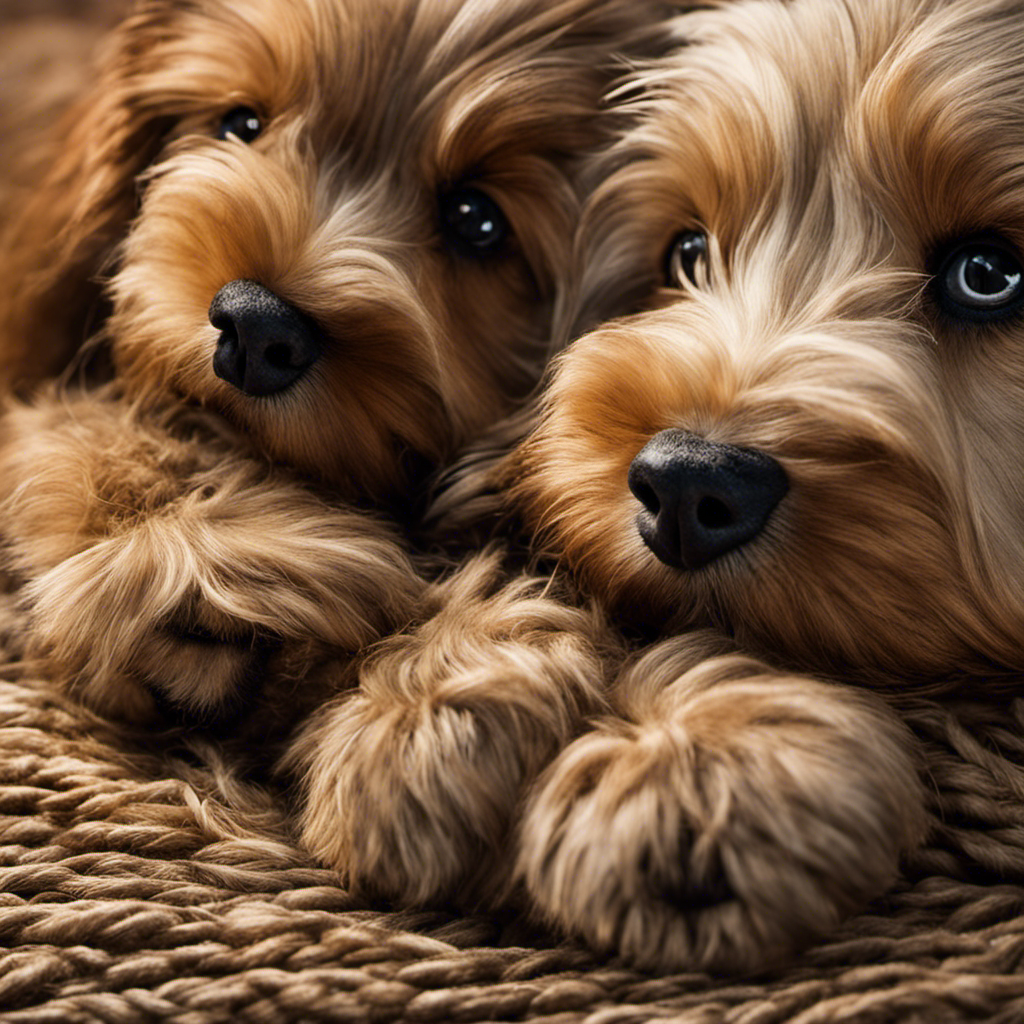
Being a pet parent, I recognize the significance of ensuring our beloved pets are joyful and in good health.
One area that often gets overlooked is the hair on their feet. But let me tell you, cutting the bottom hair of their paws is crucial.
It not only prevents potential hazards, but also ensures their overall well-being.
In this article, I will delve into the reasons why we need to take this simple yet vital step in maintaining our pets’ feet.
Key Takeaways
- Regular grooming prevents foot infections.
- Overgrown hair can trap dirt, debris, and bacteria, leading to infections and inflammation.
- Trimming hair improves mobility and prevents discomfort and musculoskeletal issues.
- Maintaining well-groomed pet feet reduces the risk of infections, improves mobility, enhances traction, and promotes overall health and happiness.
The Importance of Regular Grooming for Pet Feet
I need to regularly groom my pet’s feet to keep them healthy and prevent any issues.
Grooming my pet’s feet is essential for preventing foot infections and improving their mobility. Regular grooming helps to remove dirt, debris, and excess hair from their paws, reducing the risk of infections caused by bacteria or fungi.
By keeping their feet clean and dry, I can prevent the growth of harmful microorganisms and the development of painful conditions such as fungal infections or hot spots.
Trimming the hair on their feet also contributes to better mobility, as excessive hair can cause discomfort and hinder their ability to walk or run properly.
Overall, regular grooming of my pet’s feet is crucial in maintaining their overall health and well-being.
Understanding the Potential Dangers of Overgrown Bottom Hair
Understanding the potential dangers of having overgrown hair on the bottom of my pet’s feet is crucial. Neglecting to regularly trim this hair can lead to a variety of potential risks and health concerns.
When hair on the bottom of a pet’s feet becomes too long, it can become matted, trapping dirt, debris, and bacteria. This can result in painful infections and inflammation.
Additionally, overgrown hair can cause pets to have difficulty walking or standing properly, leading to discomfort and potential musculoskeletal issues.
It’s important to trim this hair to prevent these problems and maintain your pet’s overall health and well-being. Regular grooming and keeping the hair on the bottom of your pet’s feet at a manageable length is a simple yet effective way to ensure their comfort and prevent potential health issues.
Tips for Safe and Effective Pet Feet Hair Trimming
Regularly trimming the hair on my pet’s feet is essential for their safety and comfort. Not only does it prevent matting and tangling, but it also reduces the risk of debris getting stuck between their toes. To achieve safe and effective pet feet hair trimming, it’s important to have the proper tools. A good pair of grooming scissors with rounded tips is ideal for this task. Additionally, using a comb or brush specifically designed for pets can help in detangling the hair before trimming.
To minimize discomfort during the trimming process, there are a few techniques that can be followed. First, it’s crucial to approach the task with patience and gentleness. Taking breaks in between cuts can help to prevent any pulling or tugging. Secondly, keeping the pet calm and relaxed is key. Offering treats or using positive reinforcement can help create a positive association with the trimming process. Lastly, trimming small amounts of hair at a time and gradually working towards the desired length can help prevent any accidental cuts or injuries.
Common Mistakes to Avoid When Cutting Pet Feet Bottom Hair
It’s important to avoid rushing the process when trimming my pet’s feet to prevent any accidental injuries. When it comes to cutting the bottom hair on my pet’s feet, there are some common mistakes that I need to avoid.
One of the most common mistakes is cutting too close to the skin, which can cause pain and potential bleeding. Another mistake is using dull or improper tools, which can lead to uneven cuts and discomfort for my pet. It’s also important to be mindful of the direction of the hair growth and to trim in small, controlled motions.
By avoiding these common mistakes and using proper trimming techniques, I can ensure a safe and effective trim for my pet’s feet.
Now, let’s explore the benefits of maintaining well-groomed pet feet.
Benefits of Maintaining Well-Groomed Pet Feet
Maintaining well-groomed feet for my pet has several benefits, such as preventing infections and discomfort. Regularly trimming the hair on my pet’s feet is an important preventative measure to ensure their overall health and happiness. Here are three key benefits of maintaining well-groomed pet feet:
-
Reduced risk of infections: Excess hair on the feet can trap dirt, debris, and moisture, creating the perfect breeding ground for bacteria and fungi. By regularly trimming the hair, I can minimize the risk of infections and keep my pet’s feet clean and healthy.
-
Improved mobility: Long hair on the feet can cause discomfort and restrict my pet’s movement. By keeping the hair properly groomed, I can help them walk, run, and play without any hindrance.
-
Enhanced traction: Overgrown hair on the feet can reduce traction, making it difficult for my pet to walk on smooth surfaces. Trimming the hair allows for better grip and stability, preventing slips and falls.
Frequently Asked Questions
How Often Should I Trim the Bottom Hair of My Pet’s Feet?
I trim the bottom hair of my pet’s feet every 4-6 weeks to prevent matting and discomfort. Signs that it needs trimming include excessive hair between the pads, difficulty walking, and debris getting stuck.
Can I Use Regular Scissors to Trim My Pet’s Bottom Hair, or Do I Need Special Grooming Tools?
Sure, I can help! When it comes to trimming your pet’s bottom hair, using regular scissors may not be the best idea. Special grooming tools provide precision and prevent accidents. Let me share some pros and cons, as well as alternative methods and tips!
Are There Any Specific Breeds That Are More Prone to Overgrown Bottom Hair?
Certain breeds, such as Poodles, Bichon Frises, and Shih Tzus, are more prone to overgrown bottom hair. Regular grooming and trimming are essential to prevent matting, discomfort, and hygiene issues in these breeds.
What Are the Signs That My Pet’s Bottom Hair Needs Trimming?
When it comes to signs of overgrown pet hair, it’s important to pay attention to excessive licking, odor, and difficulty walking. To trim your pet’s bottom hair, use sharp scissors and be gentle.
Are There Any Alternative Methods to Trim My Pet’s Bottom Hair if They Are Resistant to Grooming?
If your pet is resistant to grooming, there are alternative methods to trim their bottom hair. Some tips include using treats, distractions, and positive reinforcement. It’s important to be patient and gentle to ensure their comfort and safety.
Conclusion
In conclusion, trimming the bottom hair of our pets’ feet is vital for their overall well-being. Just like pruning a garden, it allows their paws to blossom and thrive.
By removing excess hair, we prevent potential dangers such as matting, debris accumulation, and discomfort. Regular grooming ensures that our furry friends can confidently walk, run, and explore the world around them.
So let’s give our pets the gift of well-groomed feet, paving the way for a happy and healthy journey ahead.
Janet is an esteemed member of our dedicated team at Pet Hair Vacuum Critic, where her profound passion for pets and her exceptional writing talents combine to produce informative and engaging content for our readers.
Janet’s journey into the realm of pet care and pet hair management stems from her personal experiences as a devoted pet owner. Her firsthand understanding of the challenges and joys that come with living alongside furry companions fuels her dedication to assisting others in navigating the intricate world of pet hair removal and management.
Guides & FAQs
Woman Who Knits From Pet Hair
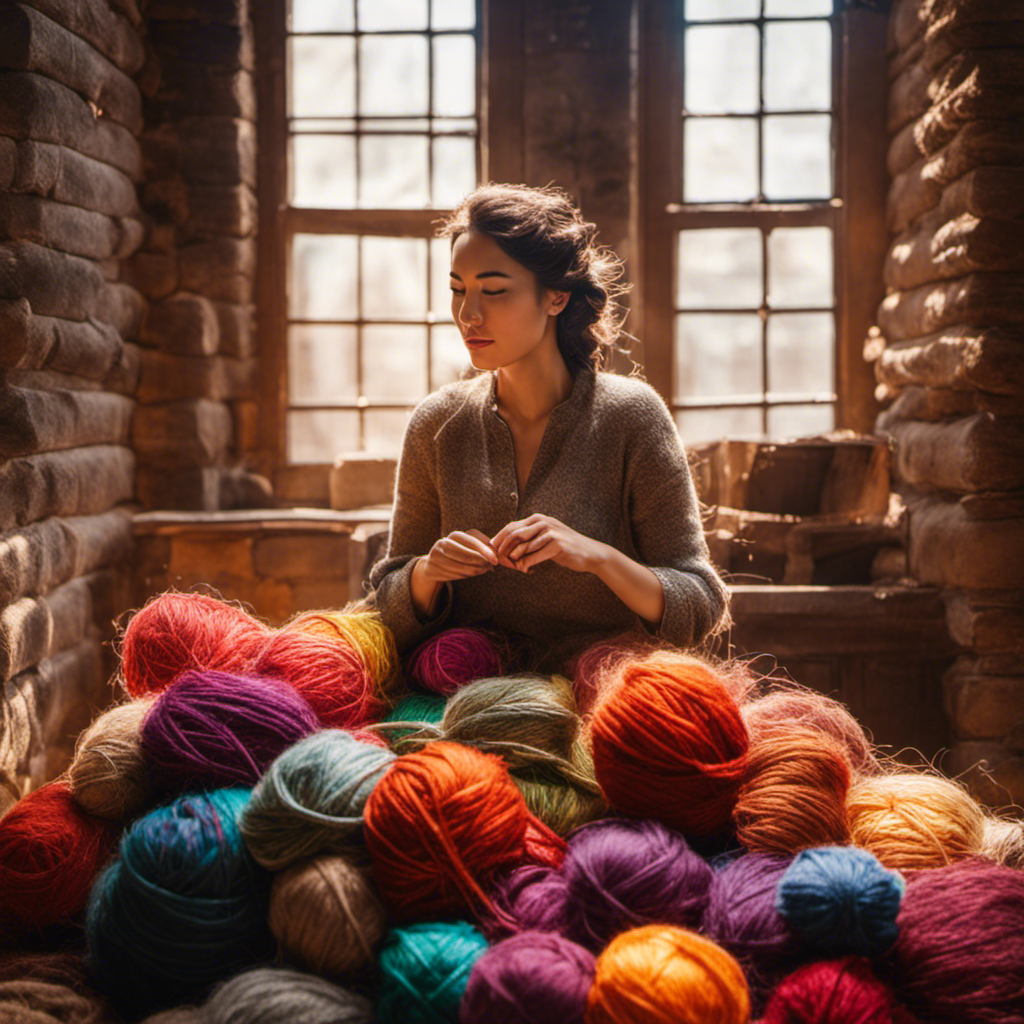
I am the lady who transforms soft fur into comfortable crafts. Fueled by a love for knitting and a deep affection for my animal companions, I have mastered the craft of converting pet hair into yarn.
In this article, I’ll share the benefits, techniques, and patterns that can transform your pet’s shed hair into unique and sustainable garments. Join me as we unravel the secrets of this fascinating craft and learn how to care for these one-of-a-kind knitted treasures.
Key Takeaways
- Collecting and preparing pet hair for knitting requires careful grooming and specific techniques to ensure clean and undamaged fibers.
- Using pet hair as yarn allows for the creation of unique and sentimental keepsakes, adding a personal touch to knitting projects and fostering a deeper emotional bond with pets.
- Discovering unique patterns and repurposing pet hair can evoke nostalgia and create meaningful items, while also providing satisfaction from using alternative materials.
- Caring and maintaining knitted items made from pet hair involves regular grooming of pets, proper storage, and gentle washing to keep the items clean, soft, and free from excessive shedding.
The Art of Collecting Pet Hair for Knitting
I love collecting pet hair for knitting because it adds a personal touch to my projects. Collecting pet hair requires careful grooming and brushing of my furry friends. I use specific techniques to gather the hair, such as combing it gently to avoid damaging the fibers.
It’s important to collect hair that’s clean and free from dirt or debris. I often mix different types of pet hair to create unique textures and colors in my knitting projects. By collecting pet hair, I’m able to utilize a sustainable and eco-friendly resource, repurposing something that would otherwise go to waste.
Understanding the benefits of using pet hair as yarn allows me to create one-of-a-kind pieces that aren’t only beautiful but also hold sentimental value.
Understanding the Benefits of Using Pet Hair as Yarn
Using pet hair as yarn has numerous benefits, such as creating unique and sentimental keepsakes. It’s fascinating to explore the different types of pet hair suitable for knitting and discover creative ways to incorporate them into various projects.
Here are some emotional benefits of using pet hair as yarn:
-
Nostalgia: Knitting with pet hair allows us to preserve a physical connection to our beloved furry friends, creating a sense of comfort and nostalgia.
-
Personalization: Incorporating pet hair into knitting projects adds a personal touch, making each item truly one-of-a-kind and special.
-
Connection: Working with pet hair yarn fosters a deeper emotional bond with our pets, reminding us of the unconditional love they provide.
Techniques for Preparing Pet Hair for Knitting Projects
To prepare pet hair for knitting projects, it’s important to carefully wash and comb the hair to remove any dirt or debris.
Cleaning pet hair for knitting projects is essential to ensure that the final product is clean and free from any unwanted particles.
Firstly, I gently wash the pet hair using a mild shampoo and lukewarm water. This helps to remove any dirt or oils that may be present.
After thoroughly rinsing, I gently squeeze out the excess water and lay the hair flat to dry.
Once dry, I use a fine-toothed comb to remove any tangles or knots.
Dealing with allergies when working with pet hair yarn can be challenging. I recommend wearing gloves and a mask to minimize exposure to allergens.
Discovering Unique Patterns for Pet Hair Knitting
As a knitter, I love exploring different patterns that can be used with the unique texture of pet hair yarn. It’s fascinating to discover alternative materials for knitting and to find creative ways to repurpose pet hair.
Here are a few emotions that exploring these patterns can evoke:
-
Excitement: There’s a sense of excitement when I come across a new pattern that works well with pet hair yarn. It opens up a whole new world of possibilities and allows me to create something truly unique.
-
Nostalgia: Knitting with pet hair yarn often brings back fond memories of my beloved pet. It’s a way to keep a part of them close to me and create something meaningful.
-
Satisfaction: Seeing the finished product and knowing that it was made from pet hair yarn gives me a great sense of satisfaction. It’s a reminder of my creativity and resourcefulness in finding alternative materials for my craft.
Exploring these patterns not only allows me to create beautiful and one-of-a-kind pieces but also encourages me to think outside the box and find new ways to repurpose materials.
Tips for Caring and Maintaining Knitted Items Made From Pet Hair
I take pride in properly caring for and maintaining my knitted items made from pet hair yarn.
Caring for knitted items made from pet hair requires some special attention to prevent pet hair shedding. To keep my knitted items in good condition, I make sure to regularly brush and groom my pets to minimize shedding.
I also store my knitted items in sealed containers or bags to protect them from dust and pet hair. When washing these items, I use a gentle detergent and wash them in cold water to prevent any damage.
After washing, I lay them flat to dry to maintain their shape. By following these steps, I can ensure that my knitted items made from pet hair yarn stay clean, soft, and free from excessive shedding.
Frequently Asked Questions
How Long Does It Take to Collect Enough Pet Hair for a Knitting Project?
It typically takes a few months to collect enough pet hair for a knitting project. To store knitted items made from pet hair, I recommend using airtight containers to prevent odors and damage. Some tips for collecting pet hair efficiently include brushing your pet regularly and using a lint roller.
Can Any Type of Pet Hair Be Used for Knitting, or Are There Specific Types That Work Best?
Any type of pet hair can be used for knitting, but some types work better than others. Certain animals, like dogs and cats, have hair that is more suitable for knitting due to their long and soft strands. However, it’s important to consider allergies when working with pet hair.
Are There Any Special Techniques for Cleaning and Preparing Pet Hair Before Using It for Knitting?
There are several cleaning techniques and tips for preparing pet hair before using it for knitting. It’s important to remove any dirt or debris from the hair and to ensure it is well-combed and free of tangles.
Where Can I Find Unique Patterns Specifically Designed for Knitting With Pet Hair?
I found some unique knitting patterns specifically designed for knitting with pet hair. They can be found online on various knitting websites and forums. Just search for "knitting patterns for pet hair" and you’ll find a wide range of options to choose from.
Are There Any Special Care Instructions for Items Made From Pet Hair, Such as Washing or Storing Them?
When washing items made from pet hair, it’s important to use gentle, cold water and a mild detergent. Avoid wringing or twisting the item, instead gently squeeze out excess water and lay it flat to dry. To store, keep in a cool, dry place to prevent odors and damage.
Conclusion
In conclusion, the art of knitting with pet hair offers a unique and sustainable way to create beautiful and functional items. By understanding the benefits and techniques of collecting and preparing pet hair, knitters can explore endless possibilities for unique patterns.
With proper care and maintenance, these knitted items made from pet hair can be cherished for years to come. So why not turn your beloved pet’s fur into a one-of-a-kind masterpiece?
Janet is an esteemed member of our dedicated team at Pet Hair Vacuum Critic, where her profound passion for pets and her exceptional writing talents combine to produce informative and engaging content for our readers.
Janet’s journey into the realm of pet care and pet hair management stems from her personal experiences as a devoted pet owner. Her firsthand understanding of the challenges and joys that come with living alongside furry companions fuels her dedication to assisting others in navigating the intricate world of pet hair removal and management.
-

 Guides & FAQs4 weeks ago
Guides & FAQs4 weeks agoLocal Customer Raves About Prompt Delivery
-
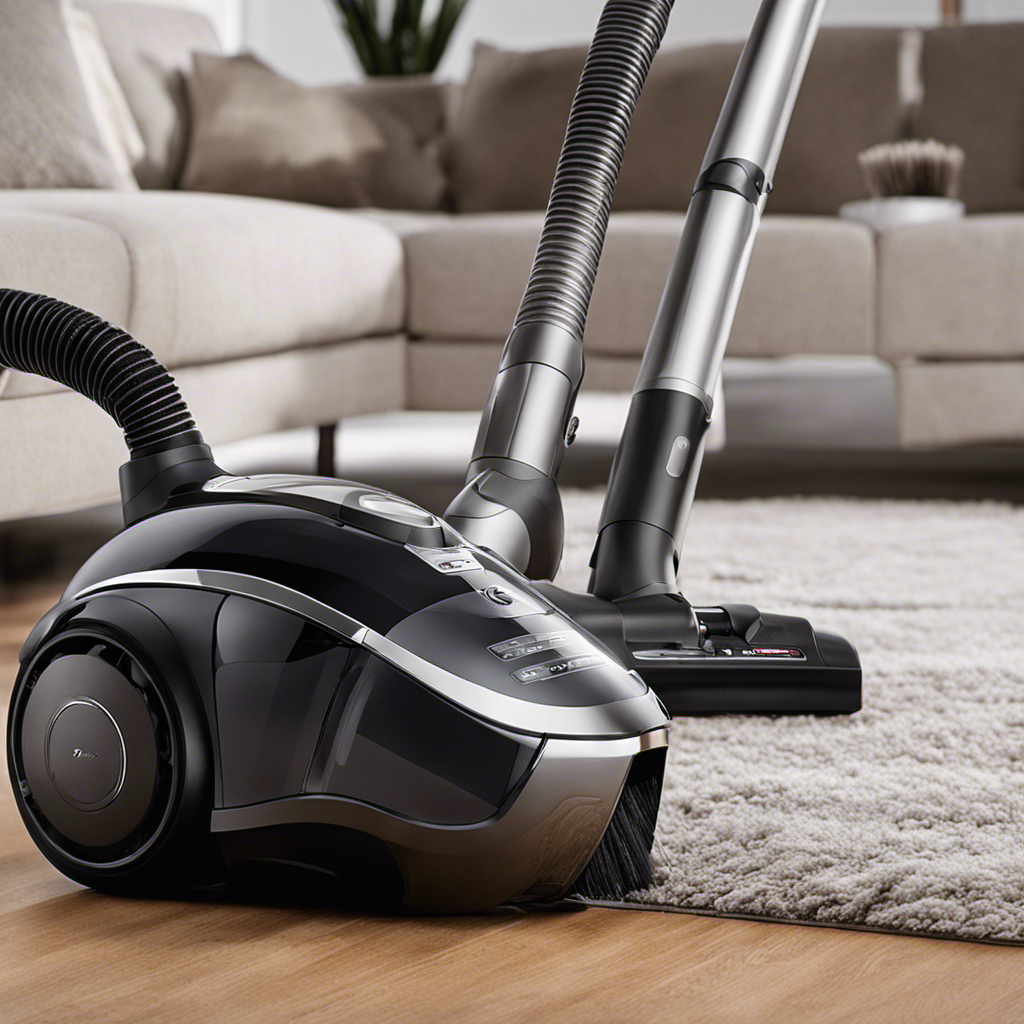
 Vacuums for Pet Hair Removal3 months ago
Vacuums for Pet Hair Removal3 months agoWhat Is Different About a Pet Hair Vacuum
-

 Guides & FAQs4 weeks ago
Guides & FAQs4 weeks agoLocal Resident Raves About Amazing Service
-
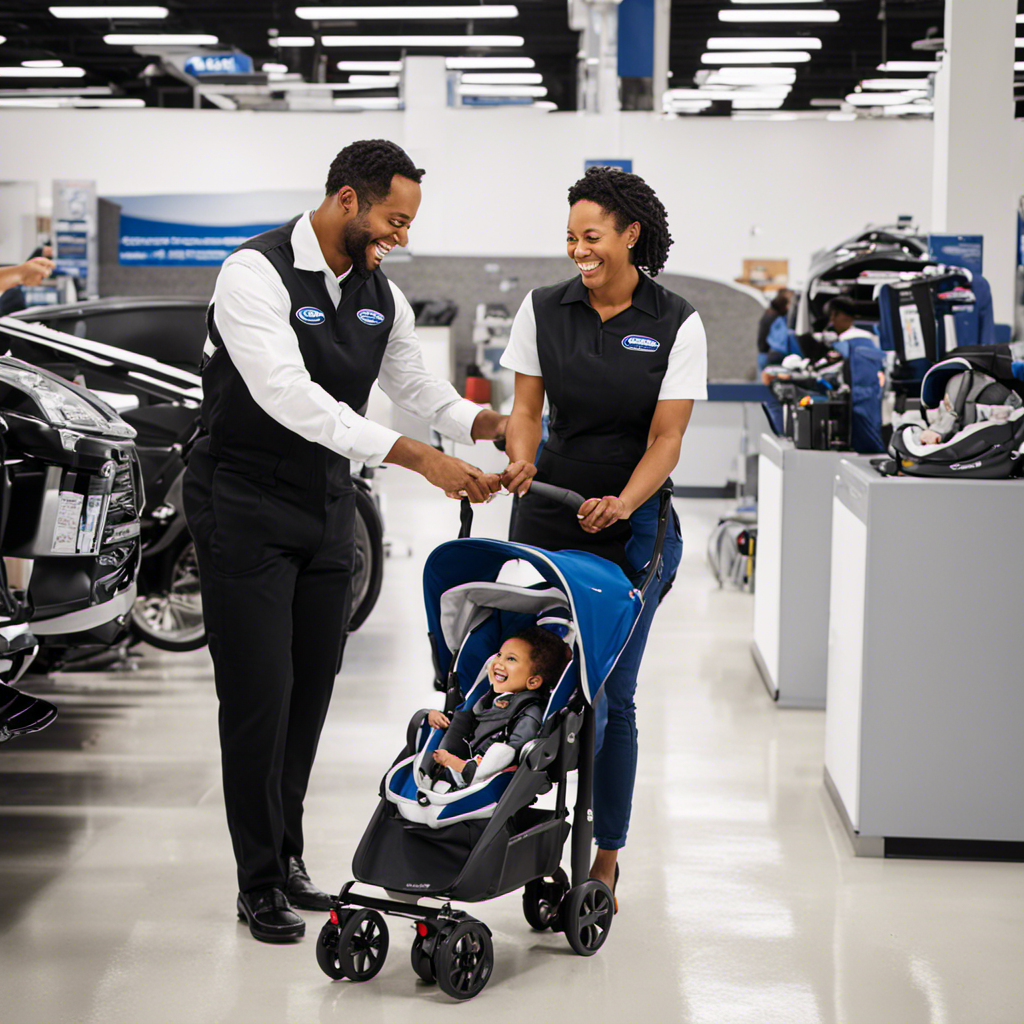
 Guides & FAQs4 weeks ago
Guides & FAQs4 weeks agoLocal Customer Raves About Graco’s Excellent Service
-
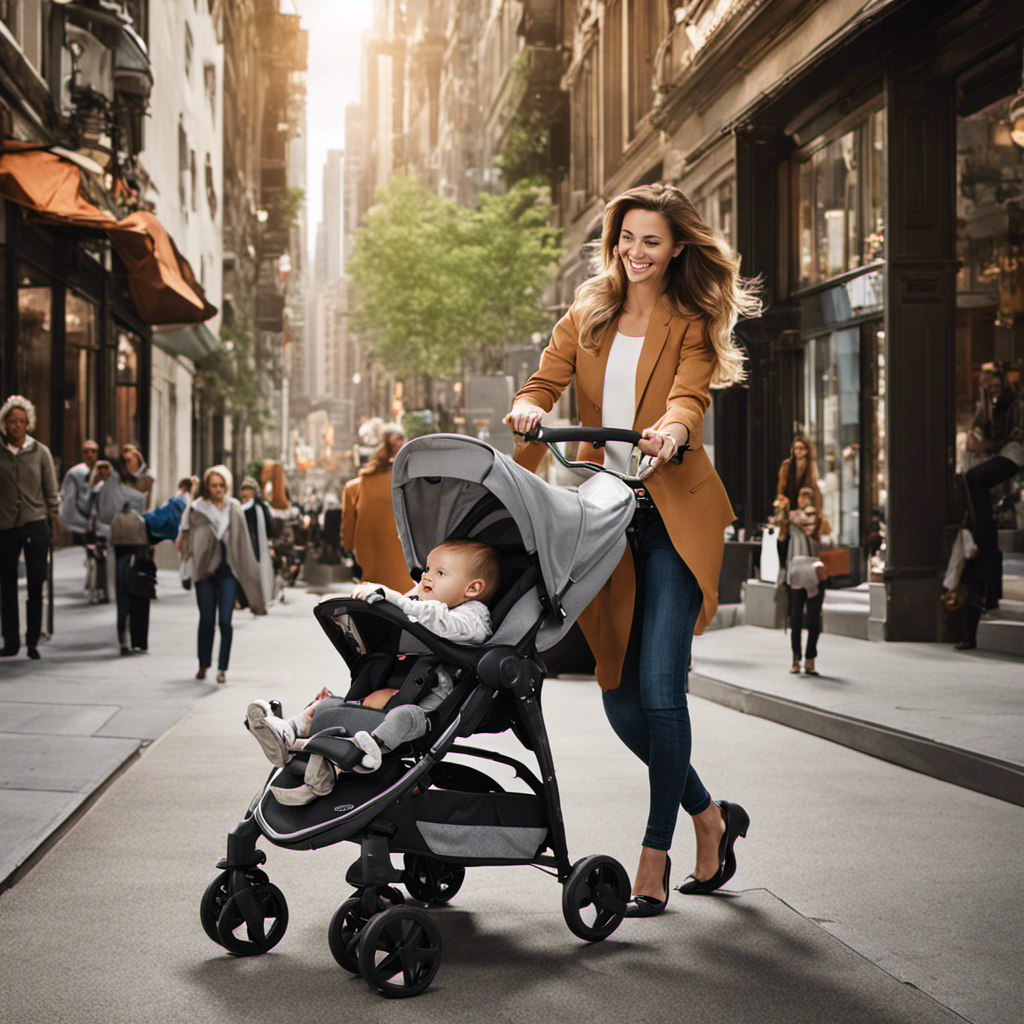
 Guides & FAQs4 weeks ago
Guides & FAQs4 weeks agoThrilled Customer Raves About Graco’s Outstanding Products
-

 Guides & FAQs4 weeks ago
Guides & FAQs4 weeks agoSydney Customer Raves About Amazing Paint Experience
-
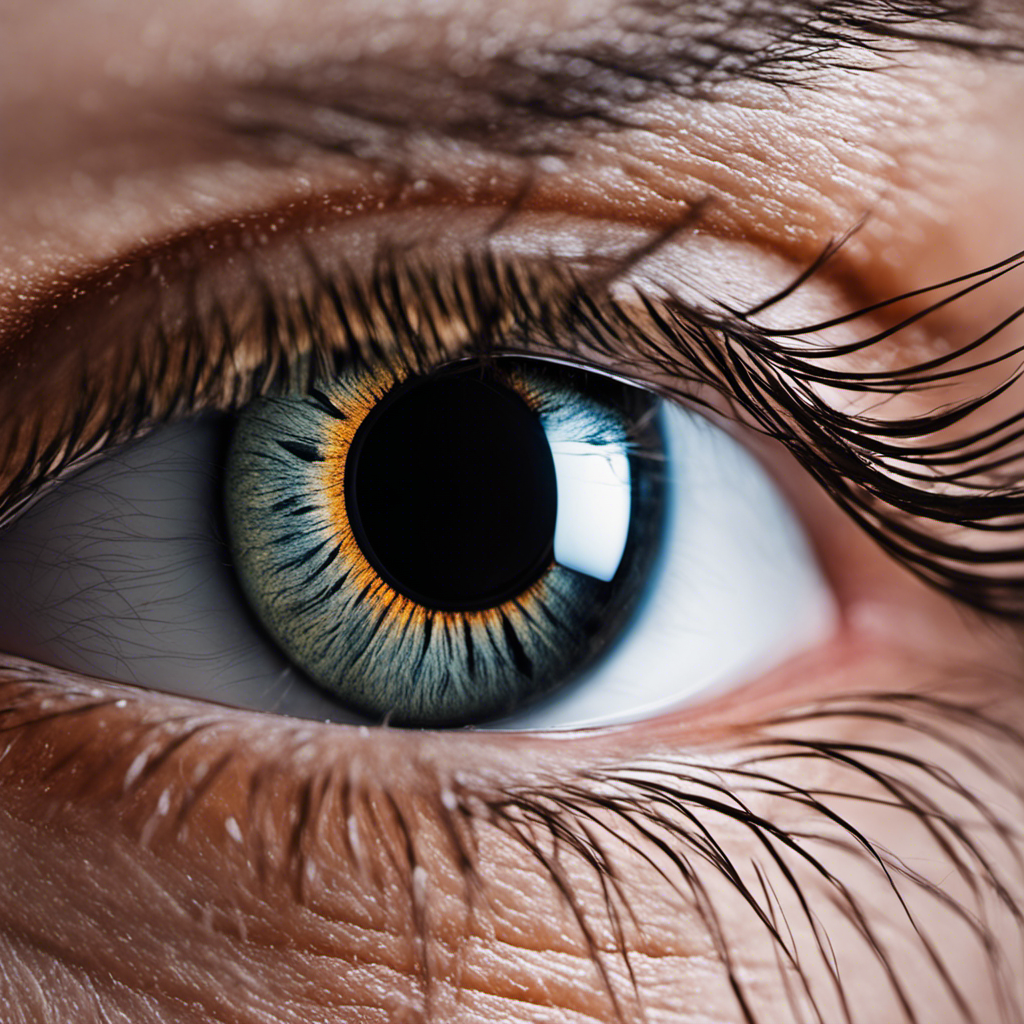
 Guides & FAQs4 weeks ago
Guides & FAQs4 weeks agoPet Hair Under Contact Lense, What to Do
-

 Vacuums for Pet Hair Removal3 months ago
Vacuums for Pet Hair Removal3 months agoWhat Is Best Vacuum for Pet Hair
